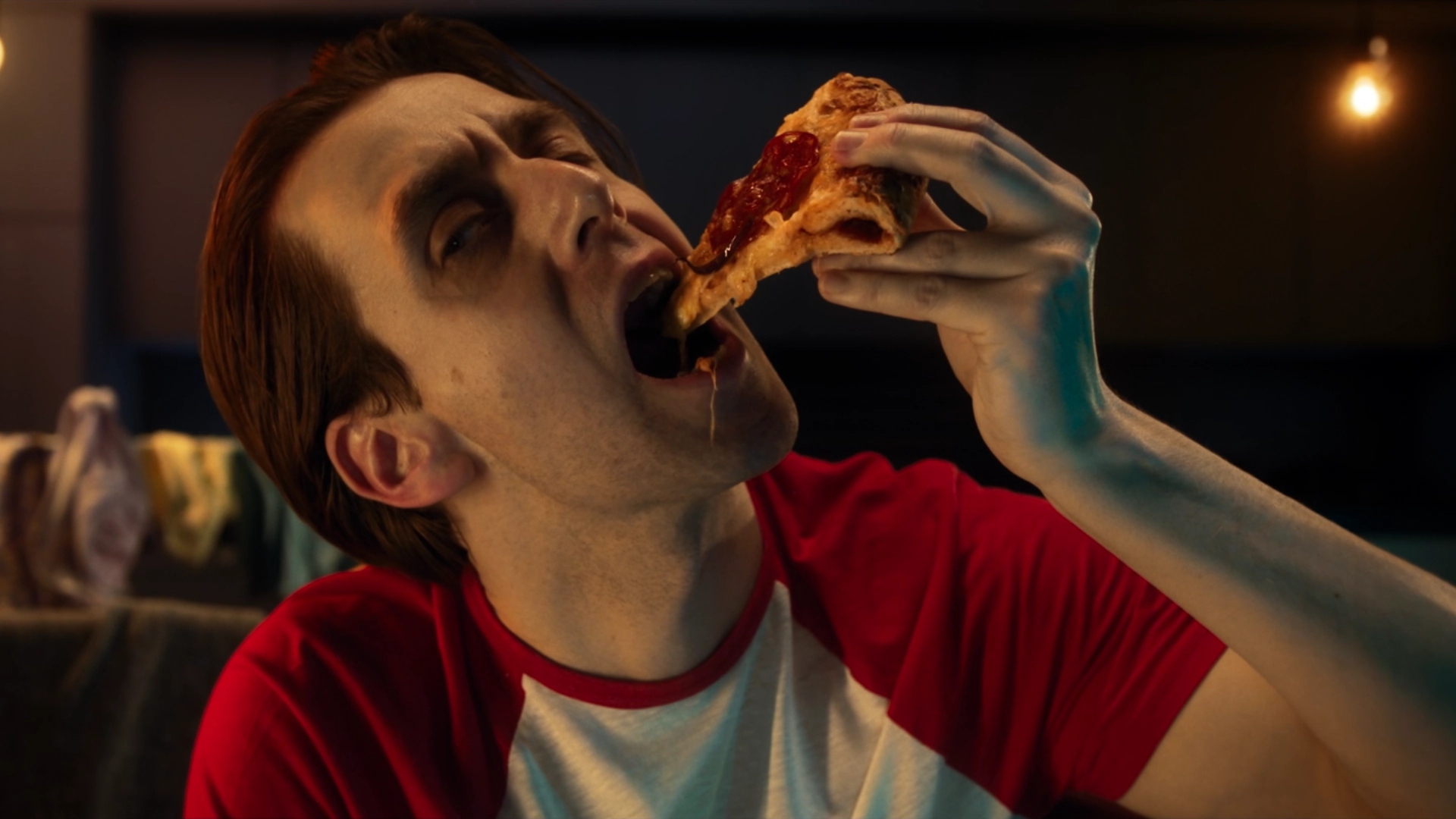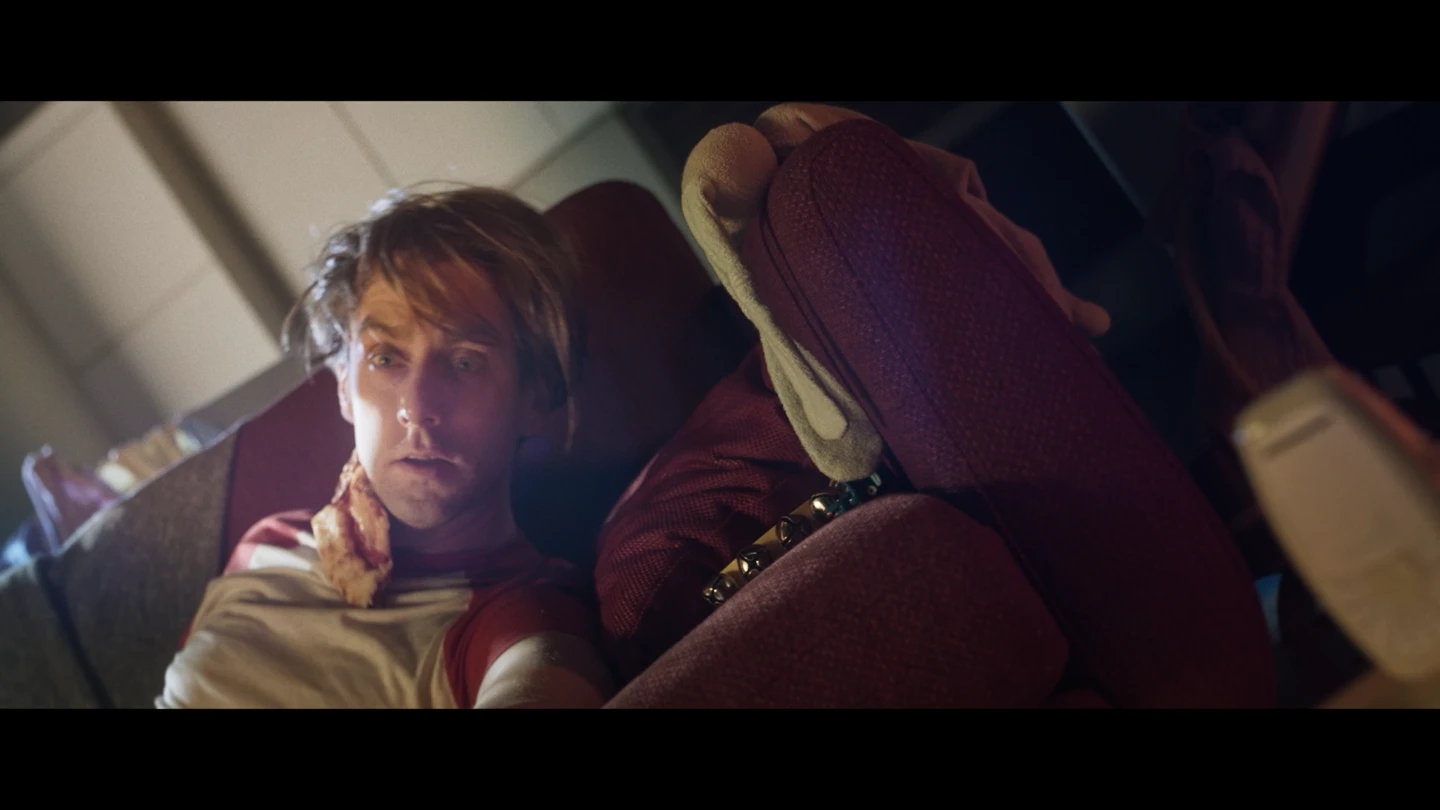The Shed, our sister project to The Garage (where we showcase new ideas, break down previous projects, and generally talk to people about things we’re passionate about) is a creative and technical space where we explore new ways of working, play with new technology and try to bring our ideas to life.
The aim isn’t necessarily to deliver something finished; it’s purely to test, learn and, if we need to, fail, so that we find another way to achieve our goals.
On the Pizza project, we had several aims, but were realistic about our deliverables. Creatively we set out make a short film telling the simple story of a new dad who has been left in for the night with lofty dreams of eating pizza, playing video games and watching some TV.
Despite his plans, he falls asleep before he even gets a slice. Pretty simple. Technically we wanted to demonstrate the potential of shooting with motion-control camera robotics combined with virtual production.
From a virtual production point of view, we wanted to show that we can keep set builds pretty small. We wanted to set this in a small apartment where the kitchen overlooks the living room. We didn’t want to spend time building a kitchen for real, only for it be totally out of focus the entire time, so we planned for that to be virtual, filling the LED volume.
The foreground could then be built from a sofa, a counter, and some contextual props and lighting – in this case lots of baby clothes, toys and devices. Integration was our main concern, but we also wanted to show a change to the time of day with a complete lighting rerig, maintaining a seamless integration with real and virtual sets at all times.


Then, from a motion-control robotics point of view, we wanted to combine our lighting change with a seamless camera move spanning both times of day. So we planned a camera move that starts on one side of the TV (our transition mechanic) and finishes on the other side.
We slide from 10pm to 4am, with a TV in between, along a perfectly repeated camera path with a complete set lighting rerig in between. Without the robotics, this shot would have been next to impossible. Now we know it is possible.
We imagined we’d only get one or two shots filmed, but we hit our stride quickly, built up the momentum and captured nearly every shot. So we’re a couple of shots short, and that’s okay. We learned a lot during this project, found some issues to resolve for next time, and emerged triumphantly eating the most perfectly presented frozen pizza.

